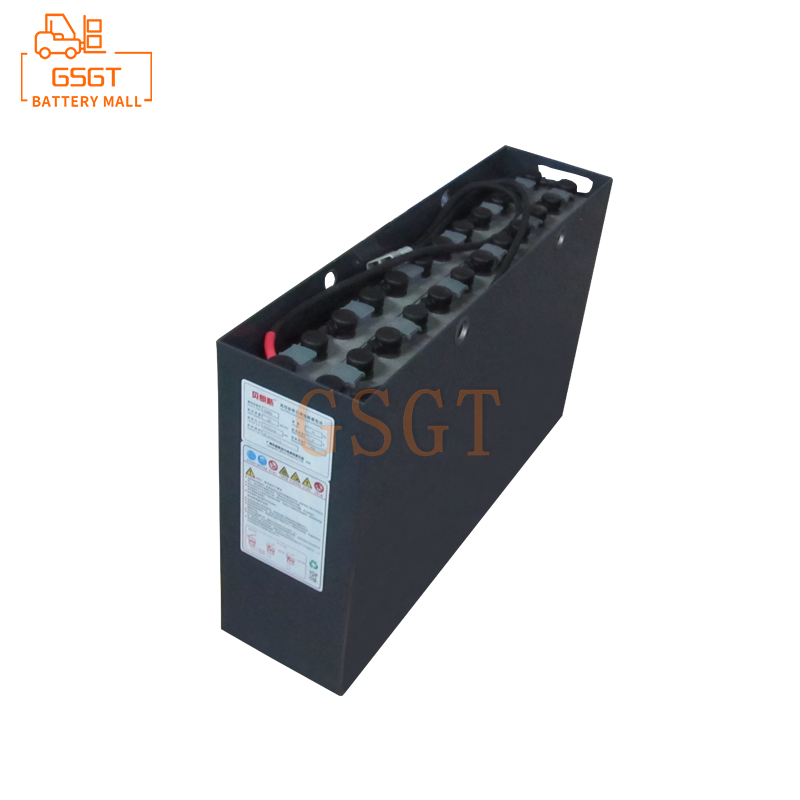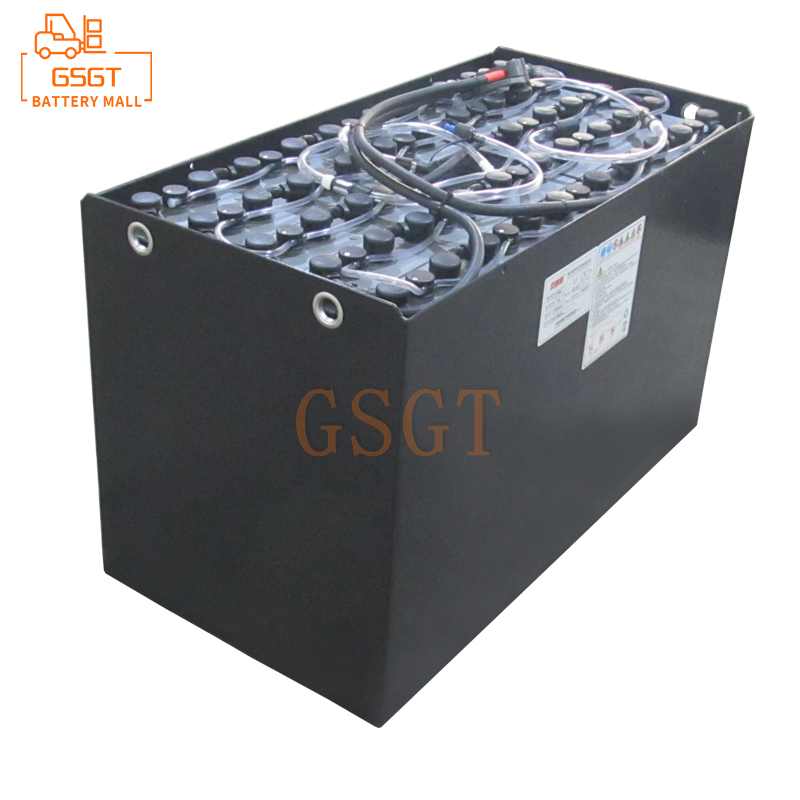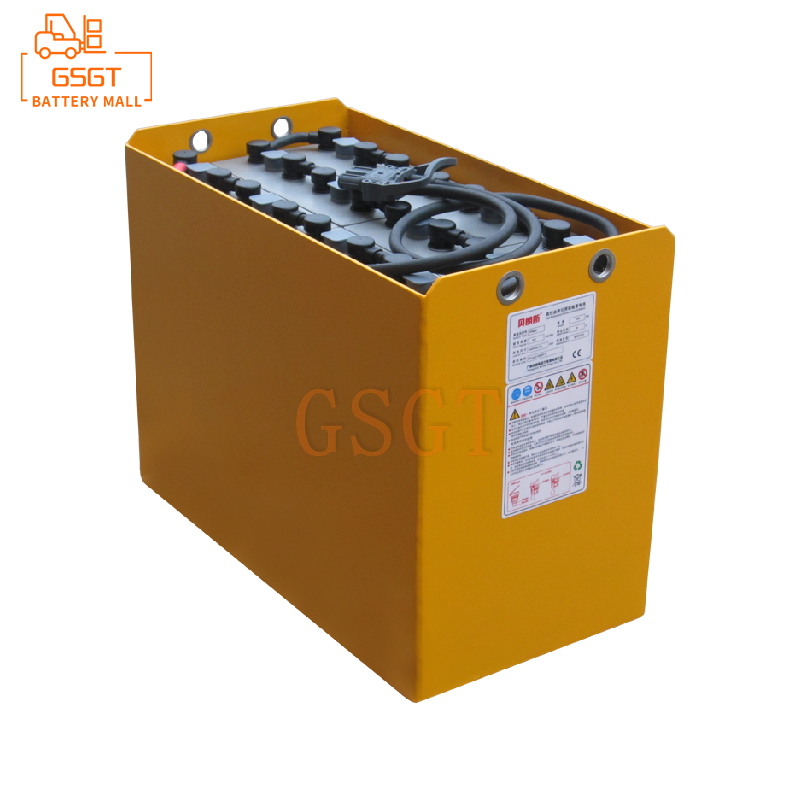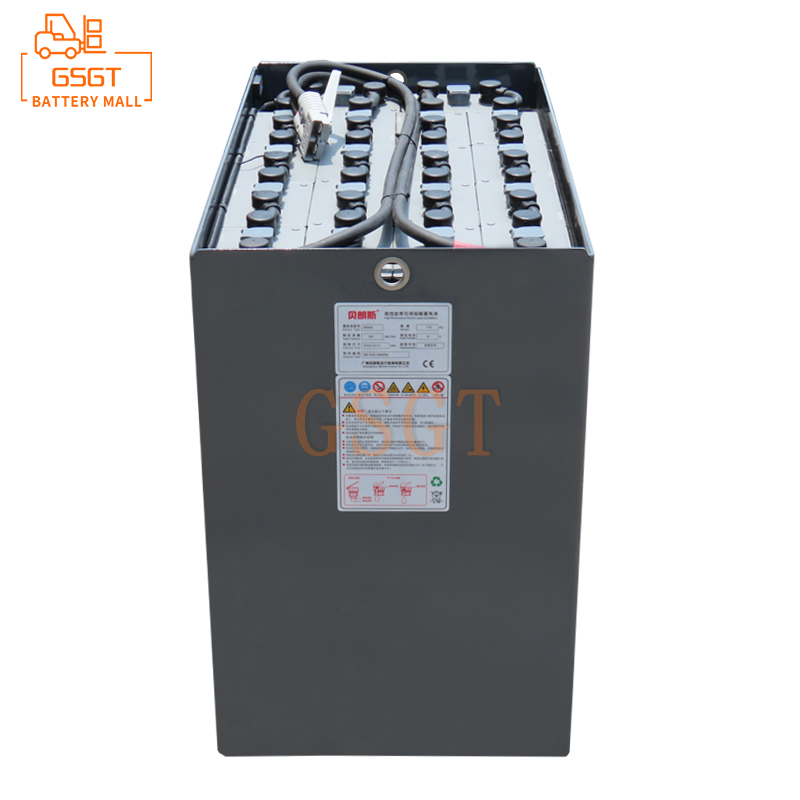Time:2025-06-12 12:28:22
Browse:599
Introduction
In the fields of modern logistics and industrial production, forklifts, as key material handling equipment, have a crucial power source. Lead-acid batteries occupy an important position in the power system of forklifts due to their advantages such as low cost and mature technology. There is a close and complex connection between the capacity and endurance of lead-acid batteries in forklifts. In-depth exploration of this relationship is of great significance for optimizing the performance of forklifts, improving work efficiency and reducing operating costs. Whether it is a logistics and warehousing center with frequent operations or a factory workshop with strict requirements for material handling, understanding the relationship between the capacity and endurance of forklift lead-acid batteries is a key link in achieving efficient production operations.
Analysis of the Capacity of Forklift Lead-Acid Batteries
The definition and representation method of capacity
The capacity of forklift lead-acid batteries refers to the amount of electricity that the battery can release under specific conditions, such as specified discharge rates, temperatures, and terminal voltages. Under normal circumstances, the unit of capacity is expressed in ampere-hour (Ah).
Internal factors affecting capacity
The material and structure of the plates: As the core component for electrochemical reactions in lead-acid batteries, the material and structure of the plates have a crucial impact on the capacity. High-quality plate materials can enhance the activity and efficiency of electrochemical reactions. For instance, using lead materials with higher purity and more uniform crystallization to make the plates can reduce resistance and increase the speed of electron conduction, thereby enabling the battery to release more electricity. The structural design of the plates is also very important. For instance, increasing the surface area of the plates can enhance the contact area between the active substances and the electrolyte, promote the electrochemical reaction, and thereby increase the battery capacity. Thinner plates can accommodate more plates in the same volume, increasing the reaction area and benefiting from enhancing the battery's capacity. However, they may also affect the mechanical strength and service life of the plates.
The concentration and quantity of the electrolyte: The electrolyte plays a crucial role in conducting ions in the electrochemical reactions of lead-acid batteries. The concentration of sulfuric acid electrolyte has a significant impact on battery capacity. Generally speaking, within a certain range, appropriately increasing the concentration of the electrolyte can enhance the ion conduction capacity, accelerate the electrochemical reaction rate, and thereby increase the battery capacity. However, if the concentration of the electrolyte is too high, it will lead to problems such as sulfation of the plates, which will instead reduce the performance and capacity of the battery. In addition, the amount of electrolyte also needs to be moderate. If the amount of electrolyte is insufficient, the plates cannot be fully submerged, which will reduce the area of the active substances involved in the reaction, resulting in a decrease in capacity. However, if the amount of electrolyte is too large, it may cause safety hazards such as overflow during the battery charging and discharging process.
The capacity requirements vary among different types of forklifts
Counterbalanced forklifts: This type of forklift is typically used for heavy-load handling tasks and requires a powerful power output to lift and move heavy goods. For instance, in large steel mills, building materials markets and other places, counterbalanced forklifts often have to handle several tons of goods such as steel and cement boards. Therefore, counterbalanced forklifts have high requirements for the capacity of lead-acid batteries. Generally, they are equipped with batteries with a capacity ranging from 300Ah to 800Ah or even higher to meet the needs of long-term and high-intensity operation, ensuring stable power output and sufficient driving range during multiple heavy object handling processes.
Electric pallet trucks: Mainly applied in light-load and short-distance material handling scenarios, such as short-distance transfer of goods in supermarket warehouses and transportation of components in small factory workshops. Due to its relatively light workload and short driving distance, the requirement for battery capacity is relatively low. Generally, a 100Ah to 300Ah lead-acid battery can meet the daily work needs, which can not only ensure the normal operation of the equipment but also achieve a good balance in cost control and battery maintenance.
The relationship between the capacity and range of lead-acid batteries in forklifts
Theoretical direct connection
From a theoretical perspective, there is a direct positive correlation between the capacity of lead-acid batteries in forklifts and their range. Under the condition that other factors remain consistent, the larger the battery capacity, the more electrical energy it can store. This is just like the larger the fuel tank of a car is, the more fuel it can store and the longer the car can travel. For forklifts, more electrical energy reserves can support their motors to run continuously for a longer time, driving the forklift to travel a longer distance and thus achieving a longer range.
Complex relationships in actual use
The impact of load on range: In actual forklift operations, the size of the load is one of the key factors affecting range. When a forklift is handling heavy goods, the motor needs to output greater power to drive the forklift and lift the goods, which will cause the battery discharge current to increase. According to the characteristics of lead-acid batteries, the greater the discharge current, the lower the actual available capacity of the battery will be, and the discharge efficiency will also decrease, thereby significantly shortening the driving range.
The role of driving conditions: The driving conditions of forklifts also have an undeniable impact on their range. When driving on a flat and solid road surface, the forklift has less rolling resistance, and the motor consumes relatively less electrical energy, which can maintain a relatively stable range performance. However, if the forklift is traveling on a rough and steep road surface, the situation is completely different. When going uphill, forklifts not only have to overcome their own weight and the weight of the goods, but also deal with the friction of the road surface. The motor needs to consume more electrical energy to provide sufficient power, which will accelerate the battery discharge speed and significantly shorten the driving range. Similarly, when driving on poor road conditions, the vibration of the forklift intensifies, which may affect the stability of the internal structure of the battery, leading to a decline in battery performance and further reducing the driving range.
The influence of operating habits: The operating habits of forklift drivers also have a significant impact on battery range. Frequent sudden acceleration, sudden braking and long periods of high-speed driving and other bad operating habits will all increase battery power consumption and shorten the driving range. When accelerating rapidly, the motor requires a large amount of current instantaneously to provide the power for a rapid increase in speed, which causes the battery to discharge at a relatively high current, intensifying the consumption of electrical energy. Sudden braking will result in the kinetic energy generated by the motor being unable to be effectively recycled and utilized, causing energy waste. When a forklift is driven at high speed for a long time, its motor is in a high-speed operation state, and its power consumption will also increase accordingly, which will also cause the battery power to drop rapidly. On the contrary, smooth driving operation, reasonable control of driving speed, and avoiding unnecessary acceleration and braking can keep the battery in a relatively stable discharge state, effectively improve the utilization efficiency of electrical energy, and extend the driving range of the forklift.
Other factors affecting the range of lead-acid batteries in forklifts
The influence of temperature on battery performance
Temperature has a significant impact on the performance of lead-acid batteries, which in turn affects the driving range of forklifts. In a low-temperature environment, the viscosity of the electrolyte increases, and the diffusion rate of ions slows down, resulting in an increase in the internal resistance of the battery. This leads to a decrease in the electrochemical reaction rate inside the battery and a reduction in the actual output capacity of the battery. On the contrary, in a high-temperature environment, although the internal resistance of the battery will decrease and the electrochemical reaction rate will increase, the excessively high temperature will accelerate the corrosion and aging of the internal plates of the battery, shorten the battery's service life, and may also lead to the evaporation and water loss of the electrolyte, affecting the battery's performance and endurance. When the ambient temperature reaches above 40℃, the battery capacity may decline to a certain extent, and the driving range will also be affected.
Battery charging and discharging management
The impact of charging methods: A reasonable charging method is crucial for maintaining the performance of lead-acid batteries and extending their range. Although the traditional constant current charging method is simple, it is prone to overcharging the battery in the later stage of charging, causing the battery to heat up, lose water, accelerate the sulfation of the plates, reduce the battery capacity and lifespan, and thereby affect the driving range. By adopting intelligent charging methods, such as three-stage charging, the charging current and voltage can be automatically adjusted according to the battery's charging status, effectively avoiding overcharging and undercharging, protecting battery performance, extending battery life, and thus helping to maintain a better battery life. For instance, lead-acid batteries that adopt intelligent charging methods have a significantly slower capacity attenuation rate after multiple charge and discharge cycles compared to those charged with traditional methods, and their driving range can also be relatively stably maintained at a high level.
Control of discharge depth: Discharge depth refers to the percentage of electricity discharged by a battery during a single discharge process to its rated capacity. The lifespan of lead-acid batteries is closely related to the depth of discharge. Excessive discharge can cause irreversible damage to the battery, shorten its lifespan, and also reduce its actual available capacity, affecting its range. Generally speaking, the depth of discharge of lead-acid batteries should be controlled within 80% to ensure that the battery has a better cycle life and performance. If the battery is discharged to a depth of more than 80% for a long time, the active substances on the battery plates will age and fall off at an accelerated rate due to excessive consumption, resulting in a rapid decline in battery capacity and a significant reduction in the driving range of the forklift.
Considerations and suggestions in practical applications
Select batteries of appropriate capacity according to the job requirements
When enterprises equip forklifts with lead-acid batteries, they must fully consider their actual operational requirements. For work scenarios with high work intensity, long working hours, long transportation distances and heavy loads, such as large logistics and warehousing centers and heavy industrial production workshops, large-capacity lead-acid batteries should be selected to ensure the continuous and stable operation of forklifts, reduce charging frequency and improve work efficiency.
Optimize the usage environment and operation habits
Regulation of environmental temperature: Try to create a suitable working environment temperature for forklifts, especially under extreme temperature conditions. In low-temperature environments, measures can be taken to preheat the battery, such as using a battery heating device to raise the battery temperature to an appropriate working range (generally 15℃ - 35℃), so as to enhance the battery's activity and output capacity and extend the driving range. In high-temperature environments, it is necessary to ensure that the forklift's workplace is well-ventilated and avoid prolonged exposure of the battery to the sun. If necessary, cooling measures can be taken for the battery, such as installing cooling fans, to prevent performance degradation due to overheating.
Standardized operation training: Strengthen the operation training for forklift drivers and cultivate good operation habits. Teach drivers to maintain a steady speed as much as possible during driving, and avoid sudden acceleration, sudden braking and frequent start and stop operations. Plan the driving route of the forklift reasonably to reduce unnecessary driving mileage and the number of turns, so as to lower the battery power consumption. At the same time, strictly follow the operating procedures of the forklift for goods handling, avoid overloading operations, ensure that the forklift operates within the normal load range, thereby improving the battery utilization efficiency and extending the driving range.
Establish a scientific battery maintenance system
Regular inspection and maintenance: Establish a complete regular inspection system for batteries, and regularly check the electrolyte level, density, voltage, and the condition of the plates of the battery, etc. If the electrolyte level is found to be too low, distilled water should be added in time. Regularly measure the density of the electrolyte to ensure it is within the normal range. If the density is abnormal, it may indicate that the battery has faults or problems such as unbalanced charging and discharging. At the same time, check whether the connection parts of the battery are loose or corroded, and promptly tighten and clean them to ensure good battery connection, reduce resistance and improve the efficiency of power transmission.

$1060

$3050

$1690

$1630

MESSAGE
Professional And Efficient
Security
Affordable Price
Professional Services